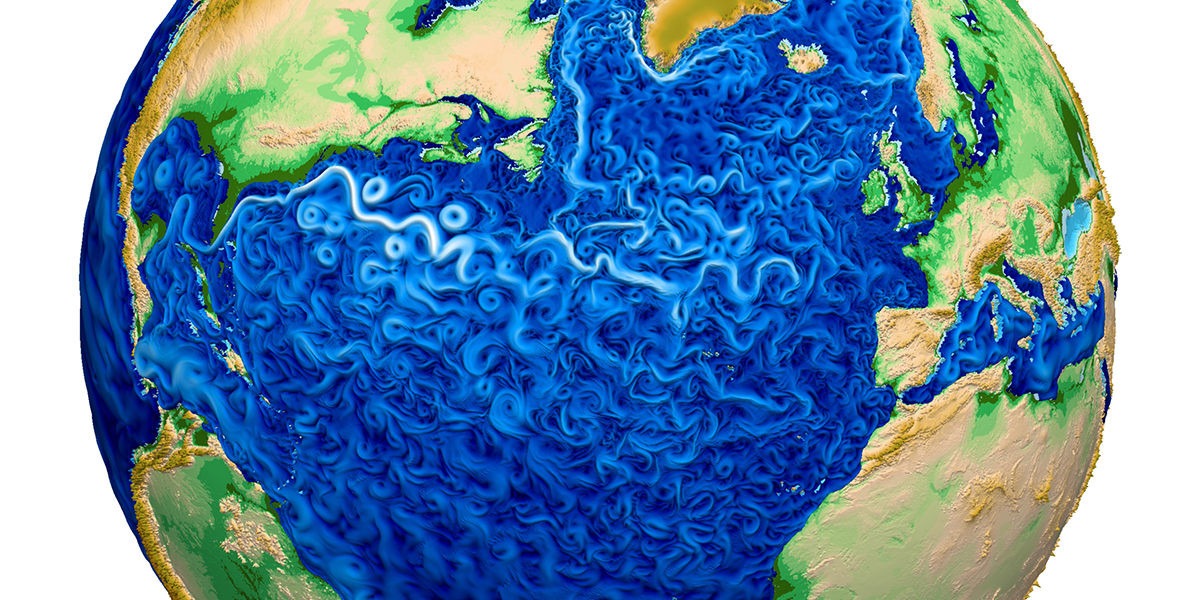Noise-driven AMOC fluctuations
The large-scale Atlantic Ocean circulation, also known as the Atlantic Meridional Overturning Circulation (AMOC), is a key component of the climate system. In the upper ocean the AMOC transports warm, salty tropical waters northward. At higher latitudes these waters are transformed to dense waters, which return southward in the deep ocean. Amongst other things, the AMOC plays a role in oceanic CO2 uptake and ensures that Northern Europe has a mild climate. There are concerns that the AMOC may weaken or collapse under global warming.
|
|
|
Ocean models can help to analyse the processes driving our climate system, but they must be tested against high-quality observational data. By combining both tools we hope to unravel the AMOC’s erratic fluctuations. |
| Femke de Jong, Claudia Wieners |

Project Team

Project description
The large-scale Atlantic Ocean circulation, also known as the Atlantic Meridional Overturning Circulation (AMOC), is a key component of the climate system. In the upper ocean the AMOC transports warm, salty tropical waters northward. At higher latitudes these waters are transformed to dense waters, which return southward in the deep ocean. Amongst other things, the AMOC plays a role in oceanic CO2 uptake and ensures that Northern Europe has a mild climate. There are concerns that the AMOC may weaken or collapse under global warming.
However, the AMOC also shows considerable variability at time scales of weeks to years, which is assumed to be largely driven by atmospheric forcing fluctuations (wind, heat flux, freshwater flux). If large enough, these fluctuations can potentially “kick” the AMOC out of its current strong state and into an alternate, weaker, AMOC state. In this project, we combine observation of the AMOC made in the OSNAP project (Overturning of the Subpolar North Atlantic) with high-resolution ocean model simulations to investigate how short-term atmospheric fluctuations affect the AMOC.

Schematic of the OSNAP array. Moored instruments measure basin wide currents, temperature and salinity continuously.
Research questions.
- What is the origin of subseasonal to interannual AMOC variability? Is the AMOC sensitive to atmospheric fluctuations of a specific type or in a specific region?
- Through which mechanisms do atmospheric fluctuations result in AMOC variability?
- What are the implications of this AMOC variability for the large-scale circulation and future AMOC development?

Connected themes
- Our Future Ocean
